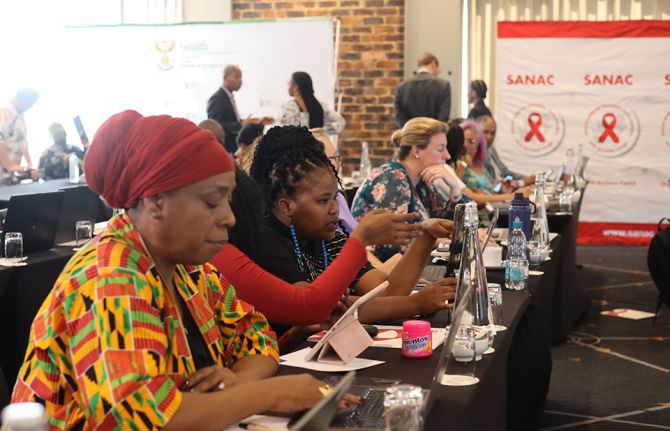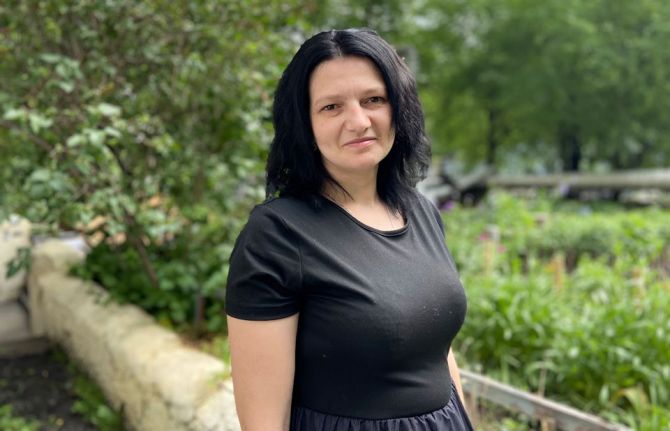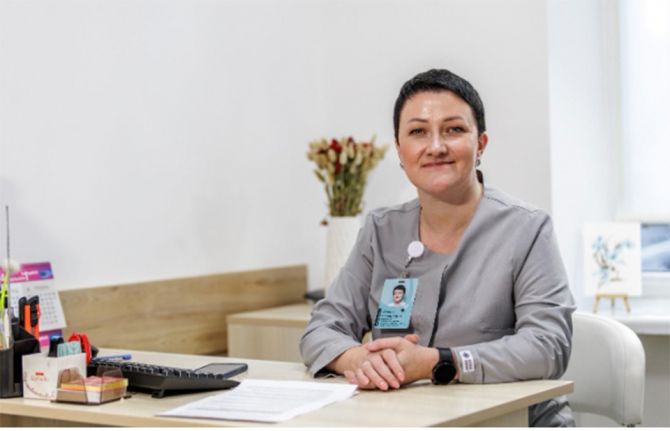
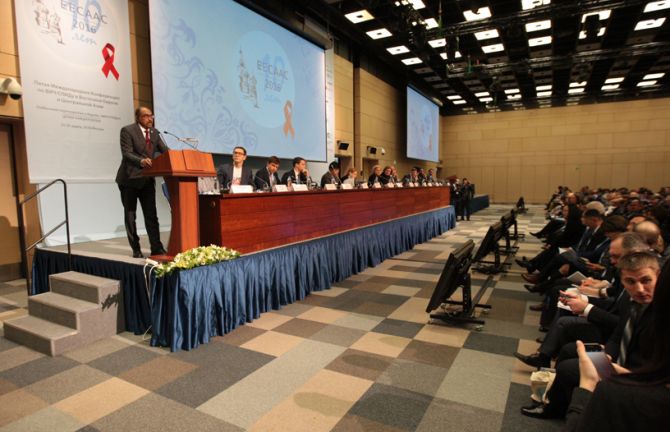
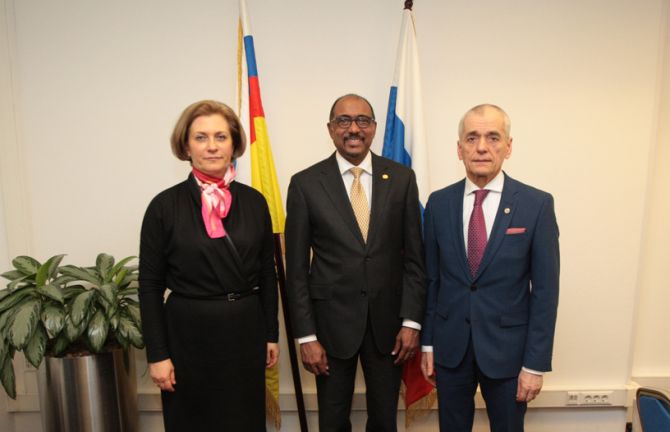
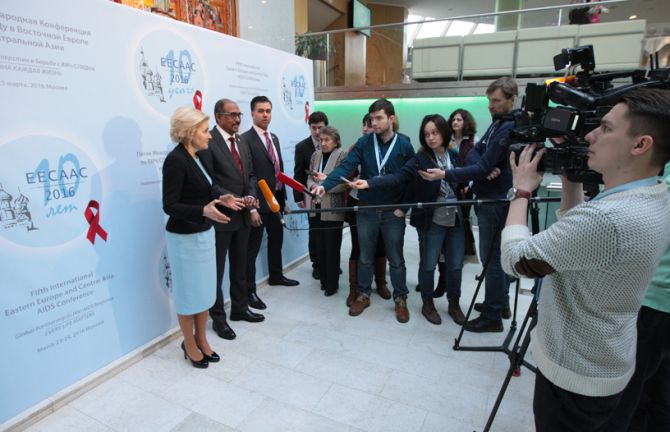
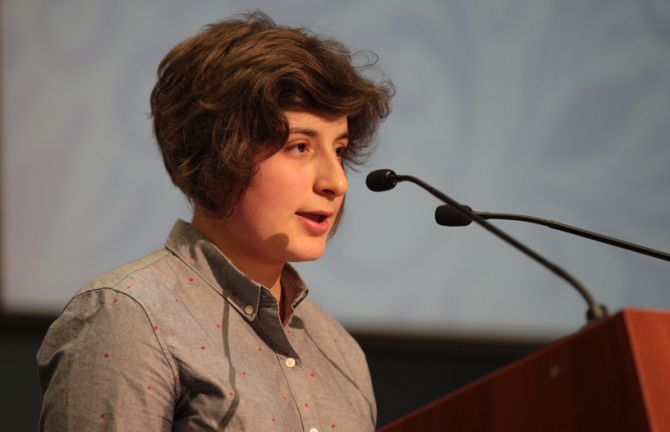
Feature Story
EECAAC 2016 opens with an urgent call to eastern Europe and central Asia to get on the Fast-Track to end AIDS
23 March 2016
23 March 2016 23 March 2016The fifth Eastern Europe and Central Asia AIDS Conference (EECAAC 2016) opened on 23 March in Moscow, Russian Federation, with discussions focusing on the urgent measures that countries and partners must take to get on the Fast-Track to end the AIDS epidemic by 2030.
The three-day conference, the largest forum on HIV in the region, unites over 2000 activists, scientists, experts, health-care professionals and community workers from over 70 countries. They will share best practices and strategies in the AIDS response.
EECAAC 2016 will also build on the commitments made in 2015 by the BRICS countries (Brazil, Russian Federation, India, China and South Africa) to contribute to enhanced international cooperation to support the efforts of countries to achieve their health goals. Among them is reaching the 90–90–90 treatment target by 2020, critical to ending the AIDS epidemic as a public health threat by 2030.
Dmitry Medvedev, Prime Minister of the Russian Federation, conveyed in his official address to conference participants that “the issue of HIV infection goes far beyond the medical sphere, uniting multiple partners, from health professionals and scientists to civil society, governments and experts.”
Representing the Russian Government, Deputy Prime Minister Olga Golodets confirmed that the Russian Federation is contributing to the global effort to end the AIDS epidemic. She thanked UNAIDS for its constructive dialogue. “I am confident that together we can stop the AIDS epidemic,” she said.
In his opening address to the conference, UNAIDS Executive Director Michel Sidibé expressed his support for the renewed urgent focus on the AIDS epidemic in the Russian Federation and across the region. “In line with the Sustainable Development Goals and leaving no one behind, we should have the courage to explore all progressive policy options in eastern Europe and central Asia. An urgent response is needed to break the trajectory of new HIV infections in the region and to get on the Fast-Track to end the AIDS epidemic by 2030,” he said.
Veronika Skvortsova, Minister of Health of the Russian Federation, emphasized that Russia has managed to achieve a fivefold reduction in the number of HIV-infected children born from mothers living with HIV in the past few years. "In 2006 the risk of vertical transmission of HIV was 10.5% ... According to 2015 data it is just 2%. Thus, 98% of children are born healthy," said Skvortsova.
Anna Popova, Conference Co-Chair and Head of the Russian Public Health Agency Rospotrebnadzor, expressed her hope that EECAAC 2016 continues the tradition of joining efforts for practical results to urgently increase the coverage of HIV prevention and treatment services.
Yana Panfilova spoke on behalf of adolescents living with HIV, “We are ready to be the leaders of tomorrow who will create a world where HIV will be only one small part of our full and productive lives!”
A number of countries in eastern Europe and central Asia are making progress towards the elimination of mother-to-child transmission of HIV. However, the same cannot be said about preventing new HIV infections. Estimates indicate that between 2000 and 2014, new HIV infections in the region rose from 100 000 to 140 000 per year. The low coverage of HIV treatment for people living with HIV also represents a major challenge for most countries.At the end of 2014, an estimated 1.5 million people were living with HIV in eastern Europe and central Asia, of which more than 70% live in the Russian Federation.

